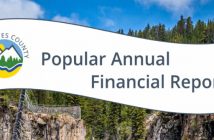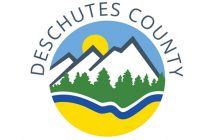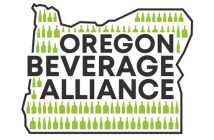Becoming an entrepreneur is easier than ever before—technology is shrinking the world, opening markets, and making it possible for many people to strike out on their own in the field of their dreams.
There are many reasons for starting your own business, and there seems to be a current mood, political climate and strong economy to support such a move.
Hiscox is a major online business insurance company that produced their eighth annual DNA of Entrepreneur report in the fourth quarter of 2016 that looks at the state of small businesses in the United States, United Kingdom, France, Spain, Germany and the Netherlands. The report examines the opportunities and challenges currently faced by entrepreneurs. Over 4,000 small and medium-sized businesses with up to 50 employees were surveyed. Of those, over 1,000 were located in the United States. Owning your own business continues to be the American dream, with 50 percent of U.S. respondents saying they always knew they wanted to be their own boss.
Surprisingly, the study found that only 37 percent of entrepreneurs cited ‘making more money’ as the primary motivator to starting their own business. The biggest motivators to starting their own business were more flexibility over working hours (68 percent); being in greater control (61 percent); and the ability to work from home/remotely (57 percent). And, while they prioritize flexibility over working hours, entrepreneurs are taking little to no vacation as more than one in five (22 percent) claim to take no holiday at all.
Solid growth
Entrepreneurs in the U.S. are confident and optimistic. Of the U.S. companies surveyed, 70 percent reported revenue growth over the past year, and nearly as many, 68 percent, reported growth in profit. Even more companies, 73 percent, said they increased the number of new customers over the past year. The sectors that showed the most growth were financial services; hospitality, which includes food, drink, travel and leisure; and technology, media and telecom.
Forbes’ 18th annual look at the Best Places for Business and Careers splits the 401 U.S. metro areas between the largest 200 by population and 201 with populations below 262,700 to assess the best and worst business climates. The top 10 small places hail from nine different states with only Oregon landing two metros up top as Corvallis at No. 5 joins Bend at No. 1.
Bullish on hiring
Of all the countries surveyed, businesses in the U.S. reported the highest level of optimism for the year ahead. In the U.S., 23 percent of business owners intend to increase their headcount in the upcoming year. This year’s report also looked at the topic of succession planning. Surprisingly, 61 percent of U.S. small business owners do not have a succession plan in place.
According to the Forbes survey, the Bend metropolitan statistical area has come roaring back from record job loss and peak unemployment levels at 17.9 percent during the “Great Recession” with the current top job growth rate in the country last year at 6.6 percent. The five-year annual rate of 3.8 percent also ranks among the highest in the U.S.
Funding challenges
Small businesses in the U.S. have been struggling with funding with 17 percent reporting that bank funding is more difficult to come by this year, a figure that was just 13 percent in 2015. Some business owners (23 percent) are using their personal credit card to help finance their business. Also, given the difficulty of obtaining traditional bank financing, U.S. small businesses are turning to alternative means of funding, including venture capital (11 percent) and peer-to-peer (15 percent).
In Oregon, Business Oregon is a State funded program for small businesses that might not otherwise qualify for traditional bank financing. It offers direct loan and loan guarantee programs to help business grow and scale, as well as working capital. The following business finance programs are backed by lottery dollars and include direct loan and loan guarantees.
Oregon Business Development Fund (OBDF) provide direct loans that leverage private capital and provides incentives for businesses to expand or locate in Oregon.
Oregon Capital Access Program (CAP) provides a form of loan portfolio loss reserve so financial institutions may make business loans that carry higher than conventional risks while complying with federal and state banking regulations.
Oregon Credit Enhancement Fund (CEF) provides loan guarantees to financial institutions in order to increase capital availability to small businesses.
Oregon Industrial Development Bonds (IDB) are available to manufacturing projects, exempt facilities and nonprofit organizations to provide access to capital primarily for value-added manufacturing.
Entrepreneurial Development Loan Fund (EDLF) offers direct loans to help start-ups, micro-enterprises and small businesses expand or become established in Oregon.
Government support
Just over a third, or 34 percent of U.S. business owners, think the government’s policies support entrepreneurs, a decrease from 37 percent last year. Respondents cited the following ‘wish list’ of government actions to support small businesses: reduce direct taxation, stimulate lending; subsidize training and professional development courses; and relax employment laws. In the U.S., 31 percent of respondents say political instability is negatively impacting their business.
Encourage courage
Despite the challenges and obstacles before them, small business owners recognize that nothing great can happen without risk. They continue to take courageous strides to grow their business. The state of American entrepreneurship remains one of cautious optimism. Growth in revenue and profit is expected over the coming year. According to Oregonbusinessreports.com, “Oregon continues to see full-throttle rates of growth. Job gains are outpacing the typical state as are wages for Oregon workers. The state’s economy is quickly approaching full employment, or a healthy labor market. Such a milestone has not been seen since 2000.
Encouragingly, underemployment, or those involuntarily working part-time in Oregon is back to pre-Great Recession rates. Given the ongoing economic strength in Oregon, the economic outlook has been raised relative to recent forecasts. The state is now expected to maintain these full-throttle rates of growth through the end of 2017 before longer-run demographics weigh on the outlook.”
Economic and political forces continue to challenge. The risks to success are well defined, but there is the potential to manage them better. In Oregon, realizing the American dream of ‘being your own boss’ is alive and well.
Bruce Barrett is a Certified SCORE Mentor with SCORE Central Oregon and a Broker with Windermere Commercial Real Estate. Contact Bruce at barrett@Windermere.com





